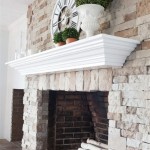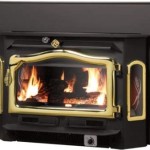How To Remove Soot From a Granite Fireplace
Granite fireplaces provide a focal point for many homes, adding warmth and aesthetic appeal. However, regular use of a fireplace often leads to soot accumulation on the granite surface. Soot is a byproduct of incomplete combustion and consists of fine particles of carbon, along with other organic and inorganic substances. Removing soot promptly is essential not only for maintaining the fireplace's appearance but also for preventing potential long-term damage and ensuring a healthy indoor environment.
Soot can be visually unappealing, causing the granite to appear dull and dirty. Over time, soot particles can become deeply embedded within the granite's porous structure, making removal more challenging. Furthermore, accumulated soot can emit unpleasant odors, especially when the fireplace is in use. From a health perspective, soot particles can contribute to respiratory problems, particularly for individuals with pre-existing conditions such as asthma or allergies.
This article provides a comprehensive guide on how to effectively remove soot from a granite fireplace. It outlines the necessary materials, step-by-step instructions, and important safety precautions to consider during the cleaning process. By following these guidelines, homeowners can restore the beauty of their granite fireplace and enjoy a cleaner, healthier living space.
Preparing for Soot Removal
Before embarking on the soot removal process, proper preparation is crucial. This involves gathering the necessary materials, protecting the surrounding area, and ensuring adequate ventilation. Neglecting these preparatory steps can lead to ineffective cleaning, potential damage to the fireplace or surrounding surfaces, and exposure to harmful soot particles.
The following materials are essential for cleaning soot from granite: a vacuum cleaner with a brush attachment, a soft-bristled brush (such as a toothbrush or nylon scrub brush), a sponge or microfiber cloth, dish soap or a specialized granite cleaner, warm water, a bucket, rubber gloves, eye protection (goggles or safety glasses), and painter's tape or drop cloths. The vacuum cleaner is used for removing loose soot particles, while the brush aids in scrubbing stubborn stains. The sponge or microfiber cloth is used for wiping down the surface, and dish soap or a granite cleaner helps to dissolve soot. Warm water is used for rinsing, and the bucket provides a container for the cleaning solution. Rubber gloves and eye protection are essential for personal safety, and painter's tape or drop cloths protect the surrounding area from spills or splatters.
Protecting the surrounding area is paramount to prevent soot from spreading and staining carpets, upholstery, or walls. Cover the floor around the fireplace with drop cloths or plastic sheeting, securing them with painter's tape to prevent movement. Consider draping furniture in the vicinity with old sheets or plastic covers. This protective barrier will catch any soot that may fall during the cleaning process, minimizing cleanup afterward.
Adequate ventilation is essential to minimize exposure to airborne soot particles. Open windows and doors to create a cross-breeze in the room. If the fireplace has a flue, ensure it is open to allow for proper ventilation. In cases of heavy soot accumulation, consider using a dust mask or respirator to further reduce the risk of inhaling soot particles.
The Cleaning Process: Step-by-Step Instructions
The soot removal process should be approached systematically, starting with the removal of loose debris and progressing to more intensive cleaning methods. Following a structured approach ensures that the soot is effectively removed without causing damage to the granite surface.
Begin by vacuuming the entire granite surface using a vacuum cleaner with a brush attachment. This step removes loose soot particles, dust, and debris. Pay particular attention to crevices and corners where soot tends to accumulate. Use the brush attachment to gently loosen soot that is clinging to the surface, avoiding excessive pressure that could scratch the granite. Empty the vacuum canister or bag frequently to prevent it from becoming full and reducing suction power.
Next, prepare a cleaning solution. For mild soot stains, a solution of warm water and dish soap is often sufficient. Mix a few drops of dish soap in a bucket of warm water, ensuring that the solution is not overly sudsy. For more stubborn soot stains, a specialized granite cleaner may be necessary. Follow the manufacturer's instructions for diluting and using the cleaner; many granite cleaners are pH-neutral and formulated to avoid damaging the stone's surface.
Using a soft-bristled brush, gently scrub the affected areas of the granite fireplace. Dip the brush into the cleaning solution and apply it to the soot-covered areas. Use a circular motion to loosen the soot, avoiding harsh scrubbing that could scratch the granite. For particularly stubborn stains, allow the cleaning solution to sit on the surface for a few minutes before scrubbing. This allows the solution to penetrate the soot and make it easier to remove. Use an old toothbrush for hard-to-reach spots and crevices.
After scrubbing, rinse the granite surface thoroughly with clean, warm water. Use a sponge or microfiber cloth to wipe away the cleaning solution and any remaining soot residue. Ensure that all traces of soap or cleaner are removed, as residue can attract dirt and grime over time. Repeat the rinsing process as needed until the water runs clear and the granite surface feels clean.
Finally, dry the granite surface with a clean, dry microfiber cloth. This helps to prevent water spots and streaks from forming. Wipe the surface in a consistent direction to ensure a uniform appearance. For areas that are particularly prone to water spots, consider using a granite sealant after cleaning to provide added protection.
Addressing Stubborn Soot Stains
In some cases, soot stains may be particularly stubborn and require more intensive cleaning methods. This may be due to long-term accumulation, the type of soot, or the porosity of the granite. Addressing these stubborn stains requires patience and the use of specialized cleaning techniques such as using a poultice or a steam cleaner.
A poultice is a paste-like mixture designed to draw out stains from porous materials like granite. To create a poultice, mix baking soda with water or hydrogen peroxide to form a thick paste. Apply the paste to the stained area, ensuring that it is fully covered. Cover the poultice with plastic wrap and secure it with painter's tape. Allow the poultice to sit on the stain for 24 to 48 hours, allowing it to absorb the soot. After the poultice has dried, gently scrape it off the granite surface using a plastic scraper or putty knife. Rinse the area thoroughly with clean water and dry with a microfiber cloth. This process may need to be repeated several times for severe stains.
Steam cleaning can also be effective for removing stubborn soot stains. A steam cleaner uses hot steam to loosen and dissolve dirt and grime, making it easier to wipe away. Fill the steam cleaner with distilled water and attach the appropriate nozzle for cleaning granite surfaces. Direct the steam at the stained area, holding the nozzle a few inches away from the surface. Use a microfiber cloth to wipe away the loosened soot as you steam clean. Ensure that the steam cleaner is used in a well-ventilated area, and follow the manufacturer's instructions for safe operation.
For extremely stubborn soot stains that resist both poultice treatments and steam cleaning, professional granite cleaning services may be necessary. Professional cleaners have access to specialized equipment and cleaning solutions that are not available to the general public. They can assess the type of soot and the condition of the granite to determine the most effective cleaning method. While professional cleaning services may be more expensive, they can provide a more thorough and long-lasting solution for removing stubborn soot stains.
After successfully removing soot from a granite fireplace, preventative measures are essential to minimize future accumulation. Regularly cleaning the fireplace after each use, ensuring proper ventilation during fires, and scheduling annual fireplace inspections can significantly reduce the buildup of soot. A clean fireplace not only enhances the aesthetic appeal of the home but also contributes to a safer and healthier indoor environment.

Removing Soot Stains From Bricks And Stone Chimneys Com

How To Clean A Stone Fireplace

How To Clean A Neglected Stone Fireplace Georgian Cottage

How To Clean A Neglected Stone Fireplace Georgian Cottage

Remove Soot From Fireplace Tips For Cleaning Chimney

How To Clean A Stone Fireplace Flemington Granite

How To Maintain Your Granite Or Marble Hearth Omega Stone

How To Clean A Neglected Stone Fireplace Georgian Cottage

How To Clean A Fireplace

How To Maintain Granite And Marble Fireplace Surrounds
Related Posts








